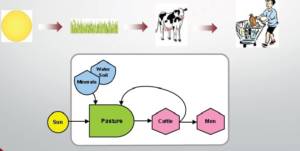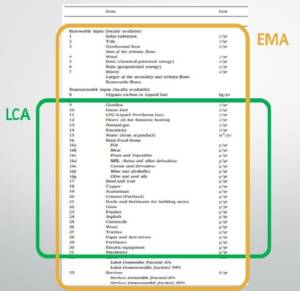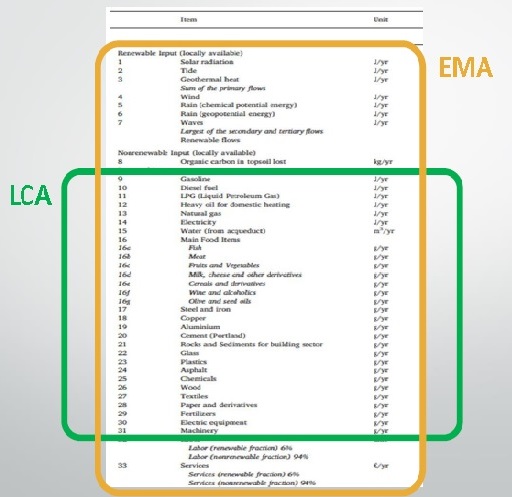I recently sent a document to an industrial partner and requested for a review. It did not take too long to receive the comment “word Emergy is a typo”. Well, even my Microsoft office application does the same, albeit, in a different way by always highlighting the word in red for spell check, which is a bit annoying arrrgghh. It is against this background that I decided to gather some few nuggets on Emergy to share with others, through our blog in simplified terms by making use of the available literature and work at hand.
Emergy is a completely unknown idea to most people, but it has the power to change our overall perception of energy and matter. Looking at products and services through the lens of Emergy provides a bigger picture of energy that goes way beyond the normal range of human perception (Ulgiati, 2016). If you allow yourself to delve further into the world of Emergy you might start to realize that the economic value of any product does not necessarily have anything to do with its energetic value in nature. Within the donor-side Emergy perspective, the value of a resource is determined by the effort that is displayed for its generation by nature and processing by society over an evolutionary trial and error process that ensures the optimization of a resource cycle. Mainstream economic theories address the concept of value in monetary terms (i.e. willingness to pay, a user-side value). Emergy-based value is related to the amount of primary resources (solar energy, geothermal heat, etc.) invested by nature (Ulgiati, 2016).

Emergy is a concise way of visualizing systems and describing them mathematically.
Emergy advocates a different concept of value, rooted in the cost of production of resources by nature, revealing the effort displayed by nature to generate resources in favor of a much larger set of users: all species on Earth, not only humans in the marketplace (Ulgiati,2016). It even challenges us to deeply consider the things we value in our society and how that value reflects in monetary terms, at work and in our behavior? Often there is a disconnect between monetary value and what we value in life and nature. Imagine what it would look like if currency$/€ was valued as 30% about ecological value ,20% social value and 50% economic value? This is just an example to initiate debate and discussion around the concept and bearing in mind that prosperity comes from resources, not from money.
Emergy is not energy. It is instead the memory of past work done by nature. So, what is to be gained by applying an Emergy perspective on economics and society? Emergy was suggested by Howard Odum as a scientific measure of the biosphere’s work in support of life processes on earth (Odum, 1996). He identified natural capital and ecosystem services as the real source of wealth, as an alternative and complement to the common belief that only labor and economic capital can be such a source. Traditional energy or economic analyses usually don’t consider inputs they cannot evaluate on a monetary or energy basis. Only monetary values are recognized by the market, but economies rely upon very large inputs from the environment; if these inputs are not considered and given an appropriate value, misuse of resources can follow, and prospects for the system cannot be inferred. While it is impossible to measure most of these human-dominated flows in a way that captures their complex value to the final users, it is much easier to generate a hierarchy of values in the biosphere processes by means of the Emergy concept.
Of course, there are strong reasons why Emergy has remained only an intellectual pastime (Ulgiati, 2016). Environmental accounting based on Emergy runs contrary to the financial accounting as we practice it these days, as it turns our usual way of looking at value upside down. It accounts for resource trade in terms of their embodied environmental cost, not in terms of their monetary value (which are embedded in economic terms of trade and market dynamics); even when the economic balance is approximately even, the environmental balance may not be. According to Emergy logic, many developing countries exporting primary raw resources for money lose environmental wealth and work potential that could have been used domestically in support of their economies; such loss is not generally compensated in terms of the Emergy value of the small amounts of manufactured resources purchased in the international market using this money.
Emerging accounting requires gathering data on incoming and outgoing flows and on the system’s internal stocks. Since these resources are measured in different units, we must put them all in terms of a common unit that expresses the work done by nature and the social groups to produce them. This unit is Emergy which is used in Emerging Accounting to make countable diagnoses of natural and anthropic systems. The starting point is the knowledge of the system: space or territory, infrastructure, socio-cultural, economic and market aspects. With this data, we analyse each unit considering limits, components, interactions, upstream (inputs) and downstream (outputs) and internal assets (use goods) relationship (Odum, 1996).
Odum as the Godfather of Emergy, suggested that it should be the basis for value and sustainability assessments. Today, through his influence, Emergy can work in parallel with other methods such as life cycle assessments. In fact, (Santagata, et al., 2019) through his direct supervision by one of Odum’s protegees/student Prof Ulgiati, are developing a procedural method for the integration of Life Cycle Assessment and Emergy. They propose that, when we jointly use LCA and EMA, we answer to two different sets of questions, both very important and much needed. Thus, differences and similarities between LCA and EMA may gain added value by their implementation within a procedural framework which exploits the characteristics of the two methods. They also caution that we should be aware, however, that due to their different definitions, integration may not always be feasible, in that some answers require LCA and other answers require EMA. Coupling the two approaches requires being able to understand when they can be effectively applied and how can we integrate their results. The integration of the two methods is also adopted within the ReTraCe project to evaluate circular transitions in the milk, wine and olive oil sectors.

Emergy and Life cycle assessment inventory of a city
Emergy is not a typo😊
Further reading material:
Odum, H. (1996). Environmental Accounting. Emergy and Environmental Decision Making. . New York, NY,: Wiley.
Santagata, R. (2019). Developing a procedural method for the integration of Life Cycle Assessment and Emergy. 8th International Conference on Advances In Cleaner Production. Sanya, China.
Santagata, R., Zucaro, A., & Ulgiati, S. (2019). Assessing the sustainability of urban eco-systems through Emergy-based circular economy indicators. Ecological Indicators,. doi:105859. https://doi.org/10.1016/j.
Sergio Ulgiati, E. P. (2016). Emergy -The concept of energy memory. Retrieved from https://energiesunited-thegradient.com/emergy/

